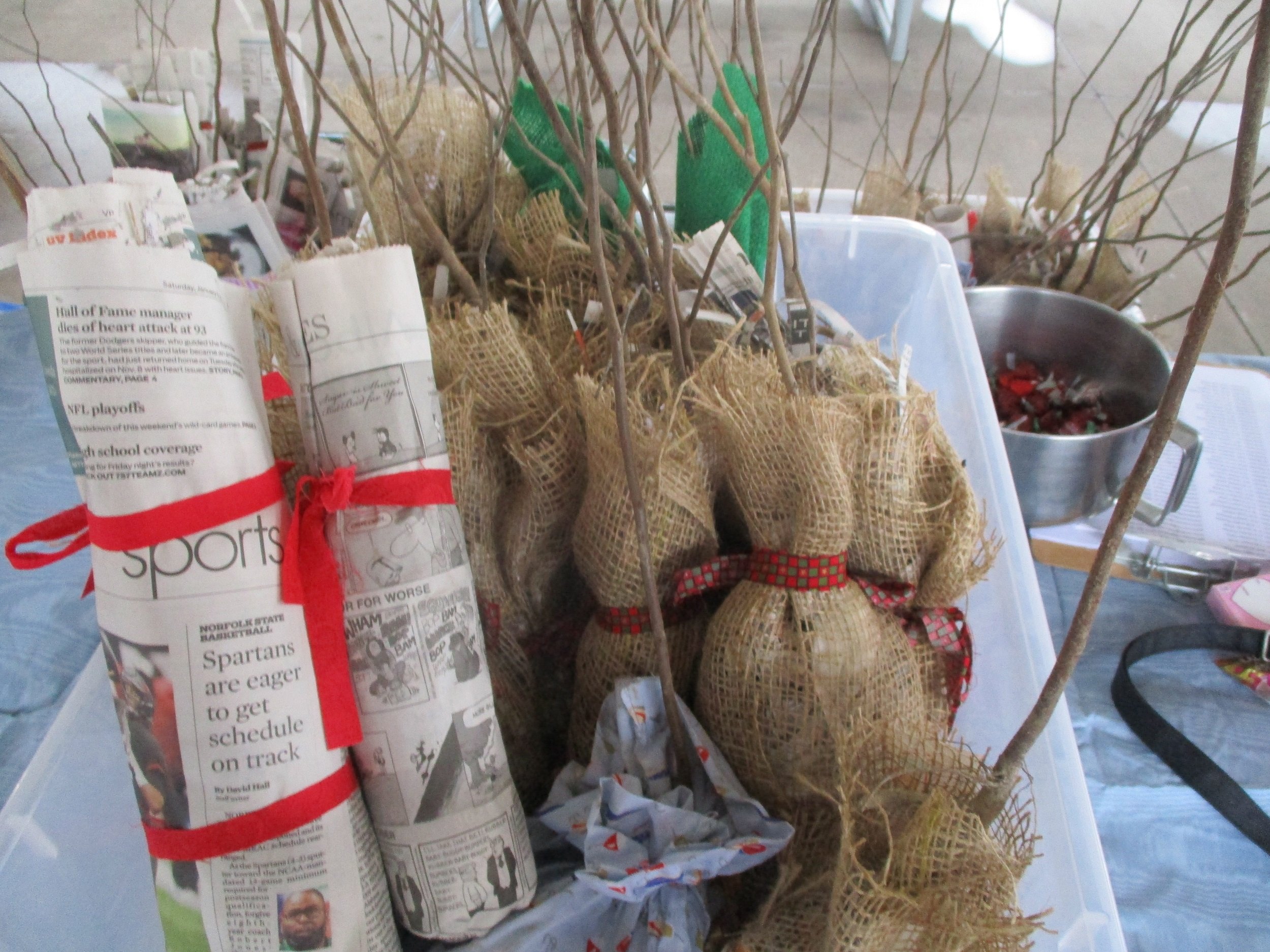
Planting a Seedling
Transport: Seedlings should be planted as soon as possible. If they are not planted immediately, they need to be placed in cold storage (33˚ to 40˚F). Storage in a barn or shed with protection from the sun, wind, and extreme temperatures is adequate for a few days. Seedling roots may need to be kept moist, but not wet. If seedlings are properly stored for a short amount of time, this step should not be necessary.
Site Selection: All the trees we are giving away grow best in full sun, meaning they need at least 6 hours of sun a day. Pick a location that does not pool water. Do not plant under overhead hazards. Choose a good planting spot with enough space for the tree roots and branches to grow.
Eastern redbuds are adaptable trees that grow well in a number of sites. The best sites are full sun to partial shade with moist, but well drained soil.
Black gum (or black tupelo) reaches a mature size of 40-70 feet tall. It prefers medium to wet soils in full sun, but can tolerate many soil types and moisture conditions. It is slow-growing, reaching about 15 feet in 10 years. Do not place in a pot. Black gum should be sited in its permanent location because its long taproot makes it difficult to transplant later.
Live oak is a long-lived evergreen. It has a broad crown, rarely grows over 50 feet tall with gnarled branches reaching out 50 to 100 feet wide. It is adaptable to both clay and sandy soils that are acidic and well-drained.
Sycamore trees need a lot of space. They are fast growers, reaching 75 to 100 feet tall with a wide spread and a 10-foot trunk diameter. Sycamore prefers full sun and moist soils with good drainage.
Planting: The most important step during planting is protecting the roots. Planting on a cool, overcast day helps minimize seedling exposure to harsh, drying conditions. Do not handle seedlings by the roots.
1) The hole or furrow should be a few inches deeper and wider than the entire root system.
2) The seedling should be planted with the root collar just below the soil surface.
3) The tap root needs to be straight within the hole, not twisted or bent (J-rooted).
4) The soil should be gently but firmly packed around the seedling to avoid air pockets (this can cause the roots to dry out causing seedling death). You should be able to gently tug on the seedling without pulling it out of the ground.
After Planting Care: If it has not rained recently, water your new tree, but do not soak the soil. Future pruning may be necessary to achieve a tree form, as opposed to a shrub form. If you do prune branches, be sure to prune the entire branch all the way to the trunk. Avoid fertilizer and only use about 2 inches of mulch.
Why Plant Trees?
There are so many reasons to plant trees! Trees help clean our air, water, and soils of pollutants that harm our health. They also help to cool down the surrounding area and our atmosphere by absorbing carbon dioxide, helping to fight climate change.
Big trees, like live oak and sycamore, make great shade trees and provide excellent habitat and food for wildlife.
The eastern redbud is also important for wildlife. Animals love to eat the seeds from the tree, and birds will make their nests in the branches. The showy flowers are great for pollinators like bees, butterflies, and hummingbirds. And they are beautiful and aromatic!
Redbud, live oak, black gum, and sycamore are all native to North Carolina, and better for the ecosystem than non-native trees.



